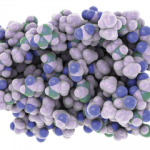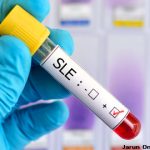Although the precise cause of systemic lupus erythematosus (SLE) is not known, it is clear that the disease develops in a genetically predisposed individual after exposure to environmental triggers. A number of genes associated with an increased risk of lupus have been identified, many in just the last several years. Yet, despite a known genetic component conferring risk of disease, the concordance in identical twins is less than 50%, suggesting that there are significant environmental or other nongenetic factors at work.
In order to further understand the interplay between genetic and environmental factors that may be involved in the initiation of disease, our research team at the Feinstein Institute for Medical Research in Manhasset, N.Y., in collaboration with many others nationwide, has initiated a study to longitudinally follow individuals at increased risk of developing SLE—the unaffected sisters of women with SLE. The goals of this study are twofold: to increase our understanding of how lupus develops and to begin devising personalized prevention and therapy strategies.
Risk Knowns and Unknowns
The risk of developing SLE is approximately 0.1% in the population (0.2% in females). In first-degree relatives, the risk is 4% to 8%.1 Despite the fact that SLE occurs nine times more frequently in females than males, few studies have evaluated the risk of developing disease separately in female and male first-degree relatives. One study suggests that the risk that sisters of lupus patients have of developing SLE may be as high as 10%.2 Studies also suggest that disease generally develops in the initially unaffected sister within seven years, with a range of two to 16 years, of the diagnosis of SLE in the proband (affected sister).3 In an early study, Christian and colleagues observed a 7% incidence of SLE in first-degree relatives of lupus patients over a 10-year prospective study.4
Like many other autoimmune diseases, SLE begins with a period when there may be circulating autoantibodies without any overt evidence of disease; nevertheless, some individuals with these antibodies never develop disease. Harley and colleagues retrospectively examined serum samples from 130 individuals in the military who subsequently developed SLE.5 Antinuclear antibodies (ANAs) were seen prior to the diagnosis of SLE in 78% of patients. In general, although there was significant variability, symptoms did not develop until a mean of nine years after the initial detection of autoantibodies. Onset of symptoms occurred within a year of the appearance of some autoantibodies (e.g., anti-Sm or anti-RNP) and most individuals had three autoantibodies by the time symptoms developed. The accumulation of autospecificities correlated with the development of clinical disease.


